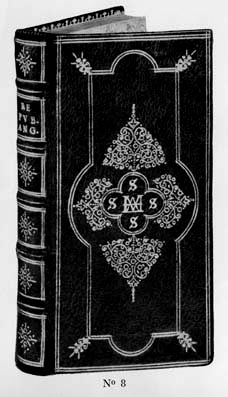

| In his introduction to his chapter on Macé Ruette (1972 Catalogue Volume II.) Raphael Esmerian states that it was shortly after 1620 that the young Habert de Montmort (1600-1679) started collecting Elzeviers. He would buy the freshly published works and have them bound by Macé Ruette. Esmerian states that he was able to examine 35 of these small volumes which were dated from 1620 to 1634. By comparing the dates of publication of these bound copies and he was able to observe chronological changes in the decorative tools. This is a very important and critical period in the history of Pointillé decoration. It may be that Macé Ruette was the first person to develop this decorative technique, which depends largely on a specific form of tool elaboration. On the previous page we looked at Esmerian's example No. 4 which he assumed to have been bound in 1622 which is also the year of publication. We see in the decorative gold tooling of this binding the use of elaborate pointillé tools, specifically a complete array of spiral tools. |
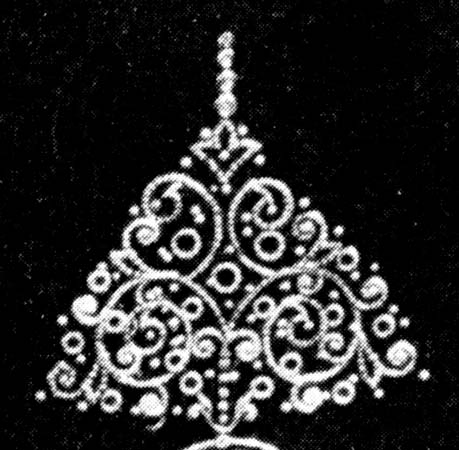
| Although the detail is somewhat blurred in Esmerian's photo, a careful study of the various elements in each spiral reveals that these 'spirals' are not the imprint of a single tool, but have been constructed from many smaller elements. |
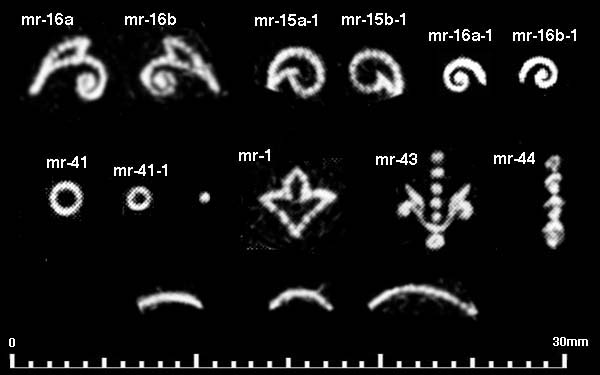
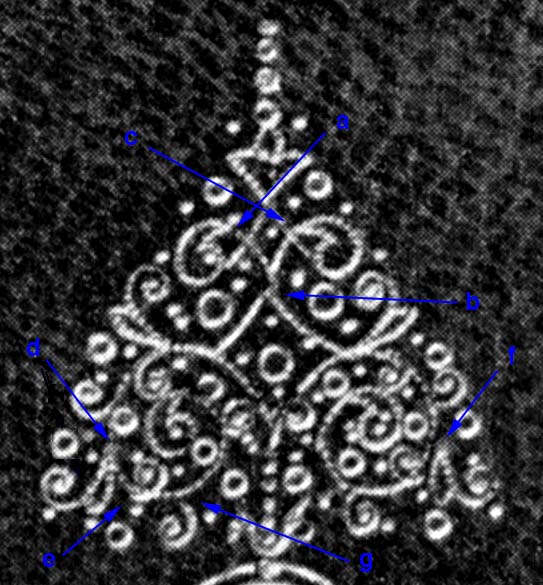
| In Esmerian's 1632 example No. 11 the detail is a bit sharper and it is much easier to see each individual imprint, which is also partly due to the fact that the placement of many of the imprints appears to be less accurate than in the 1625 example.... we can easily spot the curved section between 'a' and 'b' as it does not join well, while the angle at 'c' exposes the join of these two imprints. Notice that the imprint at 'f' is well off the mark and should be placed more or less as its counterpart at 'd'. The small spirals at 'e' and 'g' are also not well placed and thus exposed as individual tools. We can observe therefore that these early spirals were made from scratch, and that it was no easy matter to accurately link up all the parts to create flawless flowing forms... this is not surprising considering the fact that these tools are very small, some barely two millimeters in length. What a time saver to have such spiral forms of various sizes pre-made as single tools. This then brings us to the question of chronology concerning appearance of the larger spiral tools. From example No 11 we see that some spirals were still being made bit by bit in 1632, perhaps this was due to a desire to duplicate earlier work so as to keep the collection of a uniform appearance. |
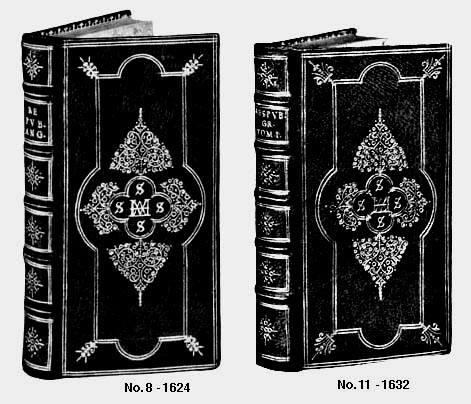
| If we now consider Esmerian's example No.5 which he has listed as being bound 'vers' 1629. Here we see examples of complete spiral tools. |
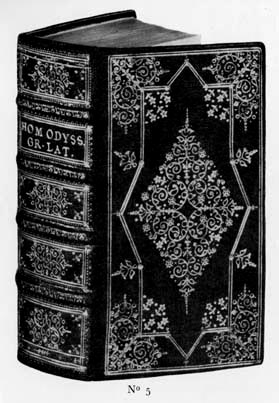
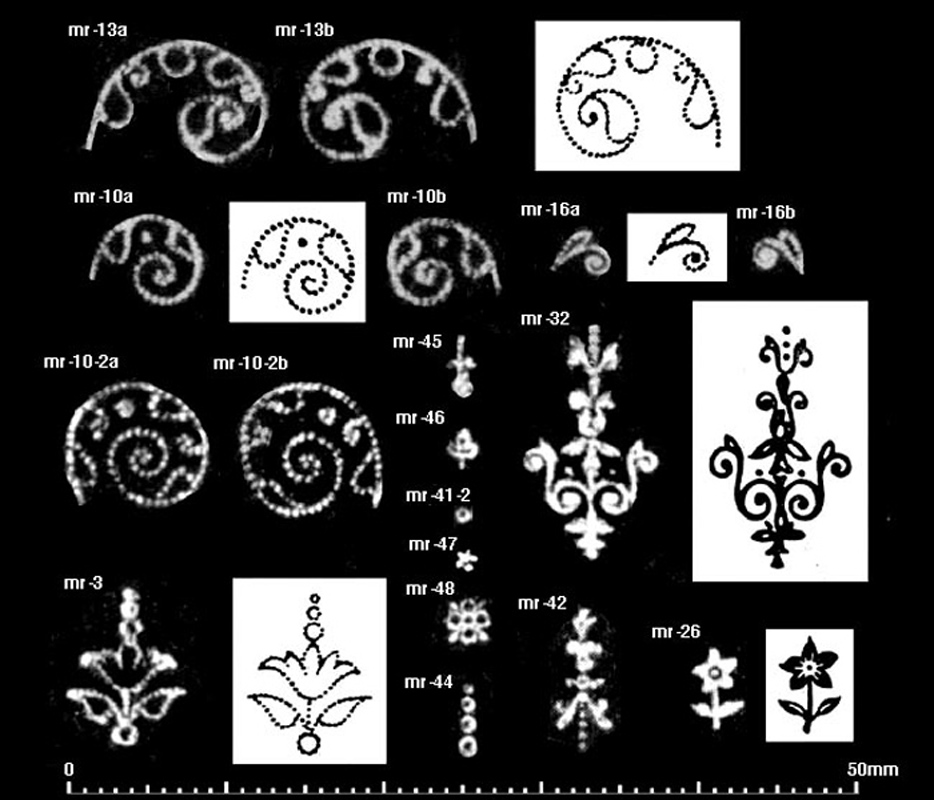
| information about the author | return to the home page of VIRTUAL BOOKBINDING |